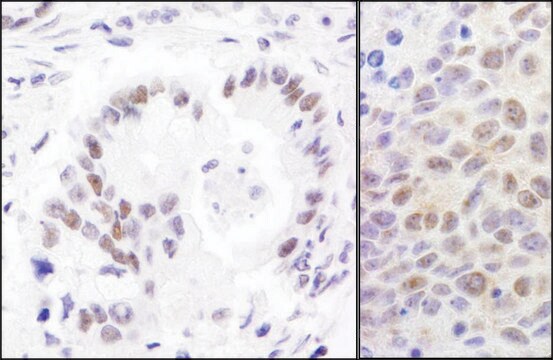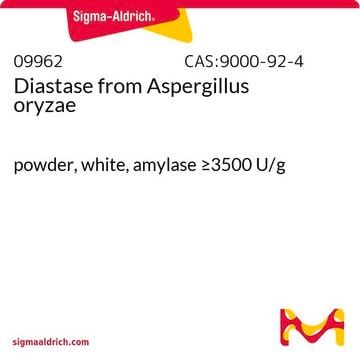NA13
Anti-Replication Protein A (Ab-1) Mouse mAb (RPA70-9)
liquid, clone RPA70-9, Calbiochem®
Synonim(y):
Anti-RP-A
About This Item
Polecane produkty
pochodzenie biologiczne
mouse
Poziom jakości
forma przeciwciała
purified antibody
rodzaj przeciwciała
primary antibodies
klon
RPA70-9, monoclonal
Postać
liquid
zawiera
≤0.1% sodium azide as preservative
reaktywność gatunkowa
human, yeast
producent / nazwa handlowa
Calbiochem®
warunki przechowywania
do not freeze
izotyp
IgG2a
Warunki transportu
wet ice
temp. przechowywania
2-8°C
docelowa modyfikacja potranslacyjna
unmodified
informacje o genach
human ... RPA1(6117)
Opis ogólny
Immunogen
Zastosowanie

Frozen Sections (2.5 g/ml)
Immunoblotting (1-5 g/ml)
Immunofluorescence (2.5 g/ml)
Immunoprecipitation (1 g/reaction)
Paraffin Sections (2.5 g/ml, no pre-treatment required)
Opakowanie
Ostrzeżenie
Postać fizyczna
Komentarz do analizy
HeLa or U293 cells or colon carcinoma tissue
Inne uwagi
Brill, S.J. and Stillman, B., 1989. Nature342, 92.
Stillman, B., 1989. Annu. Rev. Cell. Biol.5, 197.
Tsurimoto, T. and Stillman, B., 1989. EMBO J.8, 3883.
Wobbe, C.R., et al. 1987. Proc. Natl. Acad. Sci. USA84, 1834.
Informacje prawne
Not finding the right product?
Try our Narzędzie selektora produktów.
Kod klasy składowania
11 - Combustible Solids
Klasa zagrożenia wodnego (WGK)
WGK 1
Temperatura zapłonu (°F)
Not applicable
Temperatura zapłonu (°C)
Not applicable
Certyfikaty analizy (CoA)
Poszukaj Certyfikaty analizy (CoA), wpisując numer partii/serii produktów. Numery serii i partii można znaleźć na etykiecie produktu po słowach „seria” lub „partia”.
Masz już ten produkt?
Dokumenty związane z niedawno zakupionymi produktami zostały zamieszczone w Bibliotece dokumentów.
Nasz zespół naukowców ma doświadczenie we wszystkich obszarach badań, w tym w naukach przyrodniczych, materiałoznawstwie, syntezie chemicznej, chromatografii, analityce i wielu innych dziedzinach.
Skontaktuj się z zespołem ds. pomocy technicznej








